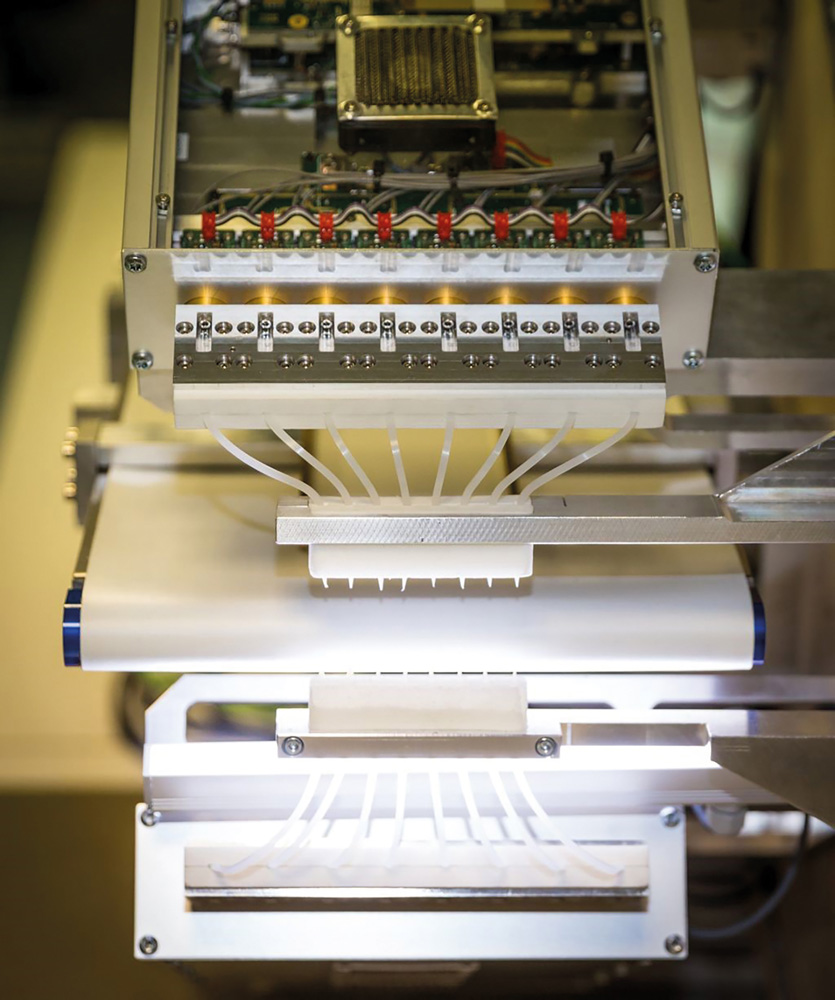Waste4Future: Recycling of Plastics
Every year, 6.3 million tons of plastic-containing waste are generated in Germany. The »Waste4Future« project aims to better identify the carbon-containing components in this waste and convert them back into high-quality raw materials.
Polyethylene, polypropylene, and polystyrene are among the most important materials globally. In Germany alone, approximately twelve million tons of plastics are consumed annually. Although the carbon contained in plastics is a crucial resource for the chemical industry, only about a quarter of the carbon and carbon compounds are recycled. This poses problems not only for the demand for fossil resources and CO2 emissions but also for environmental pollution from plastic waste.
Seven Fraunhofer institutes are striving to change this and keep carbon in the cycle much longer, thereby also improving the security of industrial supply. They are combining their expertise in the »Waste4Future« flagship project. Fraunhofer FHR is also involved, leading the work package on »Sensor Technology.« The goal is to separate plastic waste, specifically shredder light fractions, with a purity of over 98.5 percent.
Sensor Suite Assists in Sorting Plastic Waste
While plastic fragments are typically analyzed using only an infrared sensor, the »Waste4Future« project employs a sensor suite developed by Fraunhofer FHR in collaboration with Fraunhofer IOSB and Fraunhofer IZFP. The advantage of this approach is that by combining infrared, thermography, ultrasound, and terahertz sensors, the sorting quality can be maximized. For example, if an infrared sensor indicates that a plastic fragment is 90 percent polypropylene and a terahertz sensor indicates it is 92 percent, the likelihood that it is indeed polypropylene increases. Additionally, the sensor suite enables the precise separation of black plastics from one another.
Terahertz Sensing in the D-Band
The researchers at Fraunhofer FHR focused on developing terahertz sensing technology: a line camera with 32 channels operating in the D-band, from 110 to 170 gigahertz. This camera can be mounted above a conveyor belt and multiple 32-channel units can be connected. The sensor measures both the transmission through the sample and the time of flight, which helps determine the material‘s properties. The main development challenges were real-time signal processing and the long-term stability of the coherent system.
In most cases, plastic fragments are not pure materials; they contain various additives and colorants. These additives affect the signal‘s time of flight through the material. To address this, intelligent machine-learning algorithms from Fraunhofer IZFP are used to ensure the precise separation of different plastics despite these variations.
Dual-Band Chip Increases Bandwidth
Additionally, Fraunhofer FHR researchers are developing a dual-band chip that emits two frequency bands coherently and simultaneously. This chip operates at both 120 and 240 gigahertz, each with a certain bandwidth. This allows samples to be analyzed not only in the D-band but also in a higher frequency band at the same time. This increases the bandwidth and enables the capture of more material properties. For example, materials that appear very similar in the D-band may show significant differences at 240 gigahertz. The first test system of the chip has already been built. Now, the first samples will be analyzed, and the data will be compared with measurements from the single-band sensor.
Future Capability to Measure Aging
The development of the terahertz sensor is now complete. Starting in April 2024, all sensors will be integrated into the sensor suite, and initial tests of the complete system are scheduled. Preliminary results indicate that when two different plastic fractions are separated from the shredder light fraction, the required sorting purity of 98.5 percent seems to be achievable. In the future, the sensor suite could also analyze the aging of plastics, which is crucial information for chemical recycling.
